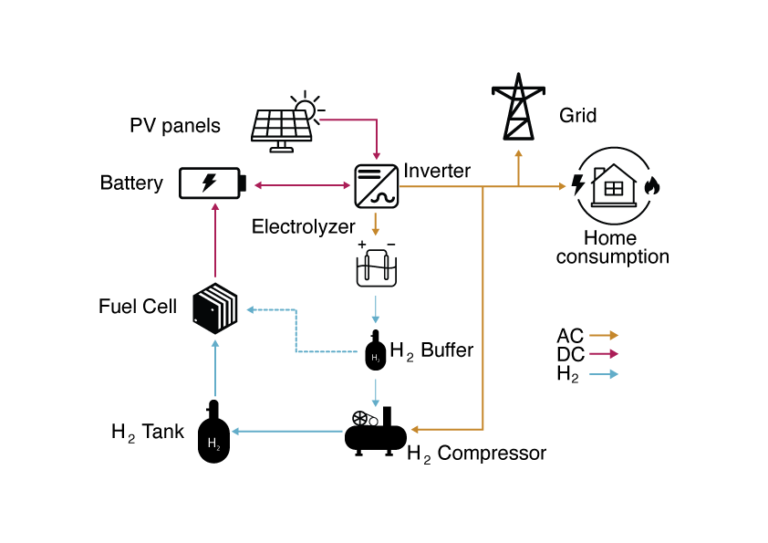Researchers in Spain have found that combining PV power generation with fuel cells and battery storage can help homes significantly reduce their levelized energy costs. Their simulation shows that houses can also become completely self-sufficient.
A group of researchers from the University of Cantabria in Spain have piloted a self-sufficient home powered solely by solar photovoltaics, batteries and hydrogen storage.
“This factory combines PV panels and hydrogen (PVHyP) as a method of seasonal energy storage, achieving the ambitious goal of achieving an electrically self-sufficient social housing unit all year round,” the group said. “To achieve this goal, a tailor-made energy management strategy (EMS) has been developed, based on the state of charge of the battery pack and the energy flow within the PVHyP, ensuring that the home’s electricity consumption is always covered by PV panels, fuel cell or battery pack.”
For their simulation, the scientists collected data from January 2022 to December 2023 for an 80 m2 social housing in Novales, a small village in northern Spain. Electricity bills from the years before the home’s renewable electrification showed that the home consumed 2,513 kWh/year with an average daily consumption of 6.88 kWh. The average consumption in winter and autumn was more than 7.3 kWh and in summer 5.88 kWh/day.
With this data, the scientists started to dimension the energy system using software optimization and market analysis. Ultimately, they ended up with twenty solar panels, each with a capacity of 40 W, on the roof, and four 2.4 kWh batteries. The remainder of the installation was installed in a shed on the adjacent property. This included a 35 L water tank that used tap water after purification for electrolysis and a 600 L hydrogen storage tank at 300 bar.
In the proposed system configuration, the PV panels must first supply the residential load. The excess generation then charges the battery, and once full it is stored in a high-pressure storage tank in the form of hydrogen generated by an electrolyzer.
“When solar radiation is insufficient to meet the home’s demand, the batteries supply the necessary energy to the home,” the academics explained. “When the batteries are empty, the fuel cell generates electricity from the stored hydrogen to charge the batteries. The hydrogen stored in the buffer is used first as much as possible to avoid the compression phase, which increases energy efficiency. The system and the house are connected to the electricity grid on a self-consumption basis to sell any excess energy back to the electricity grid.”
According to the research group, the house was self-sufficient and the LCOE decreased from €0.86 ($0.92)/kWh to €0.34/kWh, and the tenants saved €1,170 annually. “Almost 15,200 kWh have been saved from fossil fuels, which corresponds to approximately 2,260 kg of CO2,” the researchers emphasize.
They presented their findings in the study “Sustainable and self-sufficient social housing through a combined PV-hydrogen pilot,” published in Applied energy.
This content is copyrighted and may not be reused. If you would like to collaborate with us and reuse some of our content, please contact: editors@pv-magazine.com.


